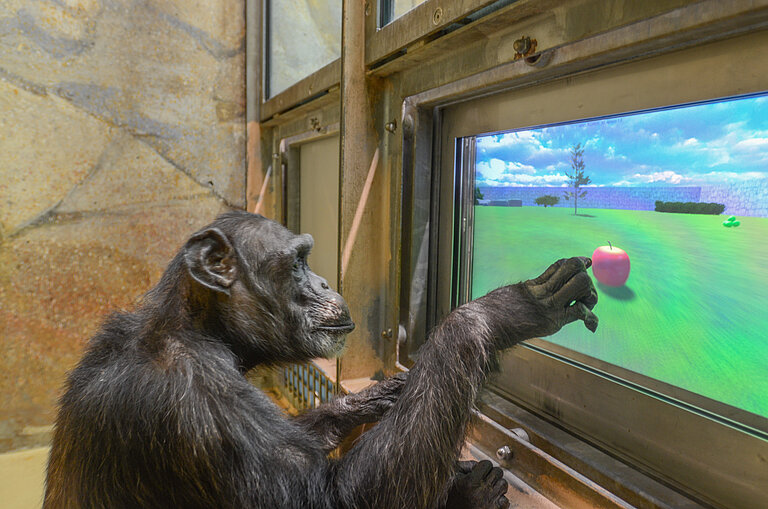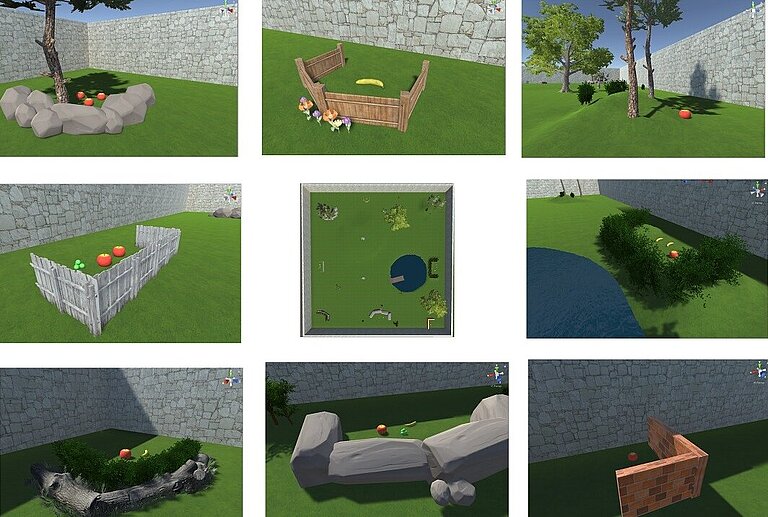Virtual Reality

3D video games and the even more immersive virtual headset environments make it possible to study how we see and navigate through space: what we pay attention to when we learn new routes, how we build mental maps of familiar surroundings, and how we shortcut and detour. Beyond space and navigation, virtual realities can help us study a variety of other aspects of cognition in naturalistic and engaging ways, from creative problem solving to episodic memory and social coordination.
Read more
Applying virtual reality to studies of animal behaviour is an exciting new area of research (e.g., Dolins et al., 2014; 2017). Over the last few years, several apes at the WKPRC have participated in search tasks using virtual environments. The Leipzig apes use touchscreens to guide a virtual agent in a first-person perspective through different cartoon style 3D environments. If the ape touches a location on the touchscreen, the agent walks or turns in that direction. The environments are presented via the custom, freely available, open access software APExplorer 3D (Schweller et al., 2022). The virtual worlds contain hills and valleys, trees, flowers and shrubs, rocks and bodies of water. Most importantly, the virtual worlds also contain virtual food, like apples, grapes, bananas and peanuts. When the ape successfully steers the agent towards a virtual piece of fruit, a reward sound is played and the ape gets a real piece of fruit in return.
Virtual environments provide an engaging cognitive challenge for apes. How the apes navigate through them gives us novel insights into how great apes make their decisions. We collect precise data on how the apes move: when they turn, what they touch and how their travel paths change over time. This way we hope to address some longstanding questions in primate spatial cognition. Are apes’ mental maps mostly a connection of familiar routes and waypoints, or can they also travel as if using a coordinate system? What spatial frames of reference, e.g., egocentric versus allocentric, do the apes rely on and how may features of the environment affect this? By documenting how apes move through virtual space we cannot only address these questions in novel ways, but also compare our findings to the behaviour of apes living in the wild.
